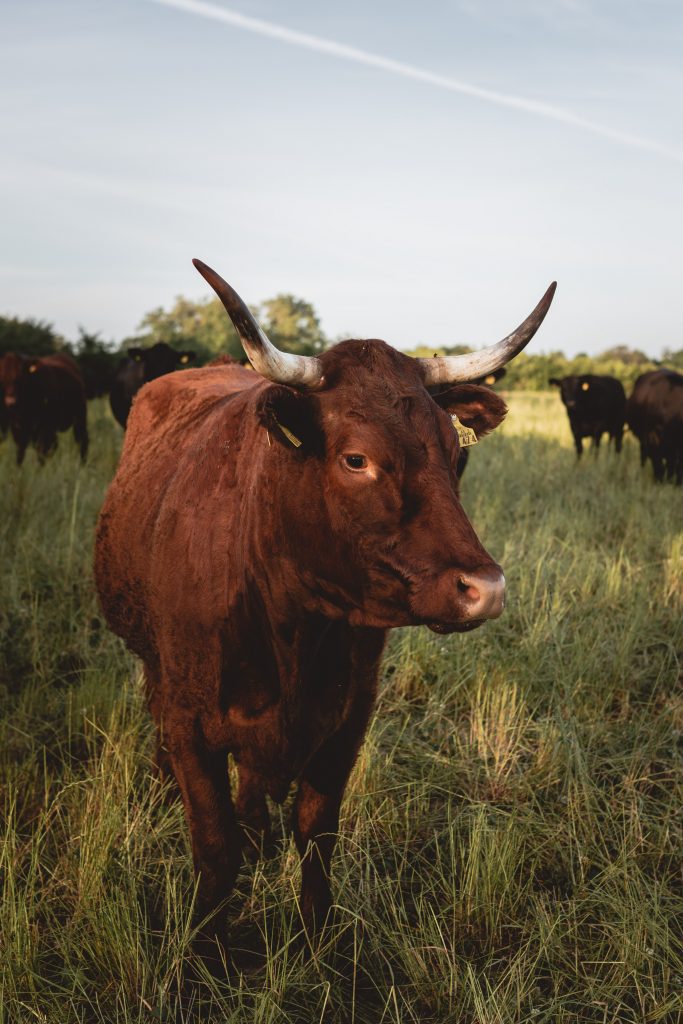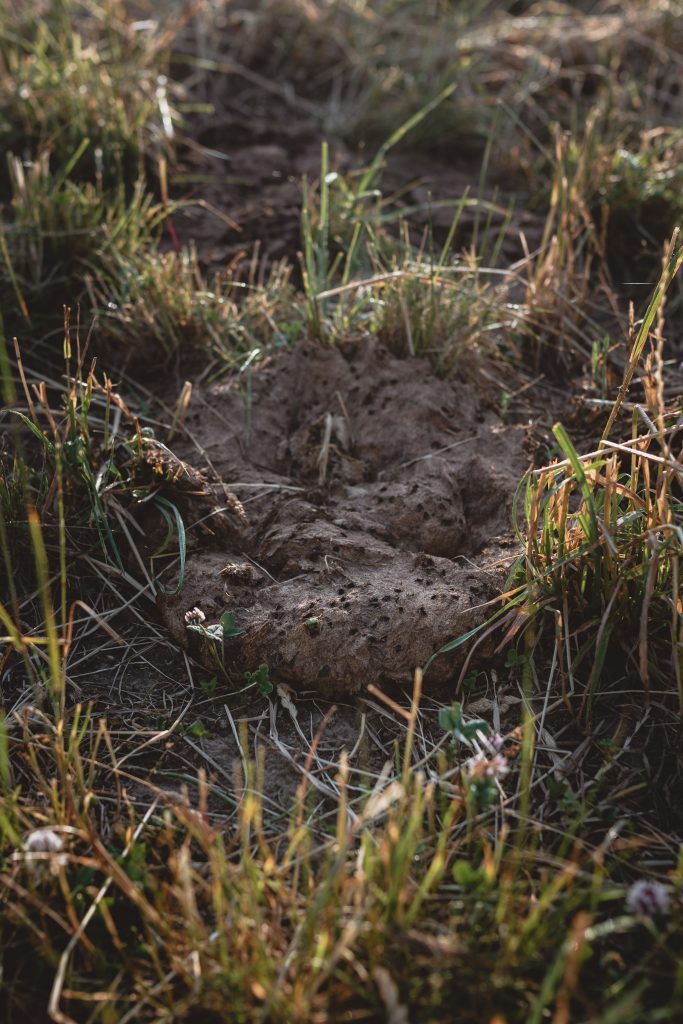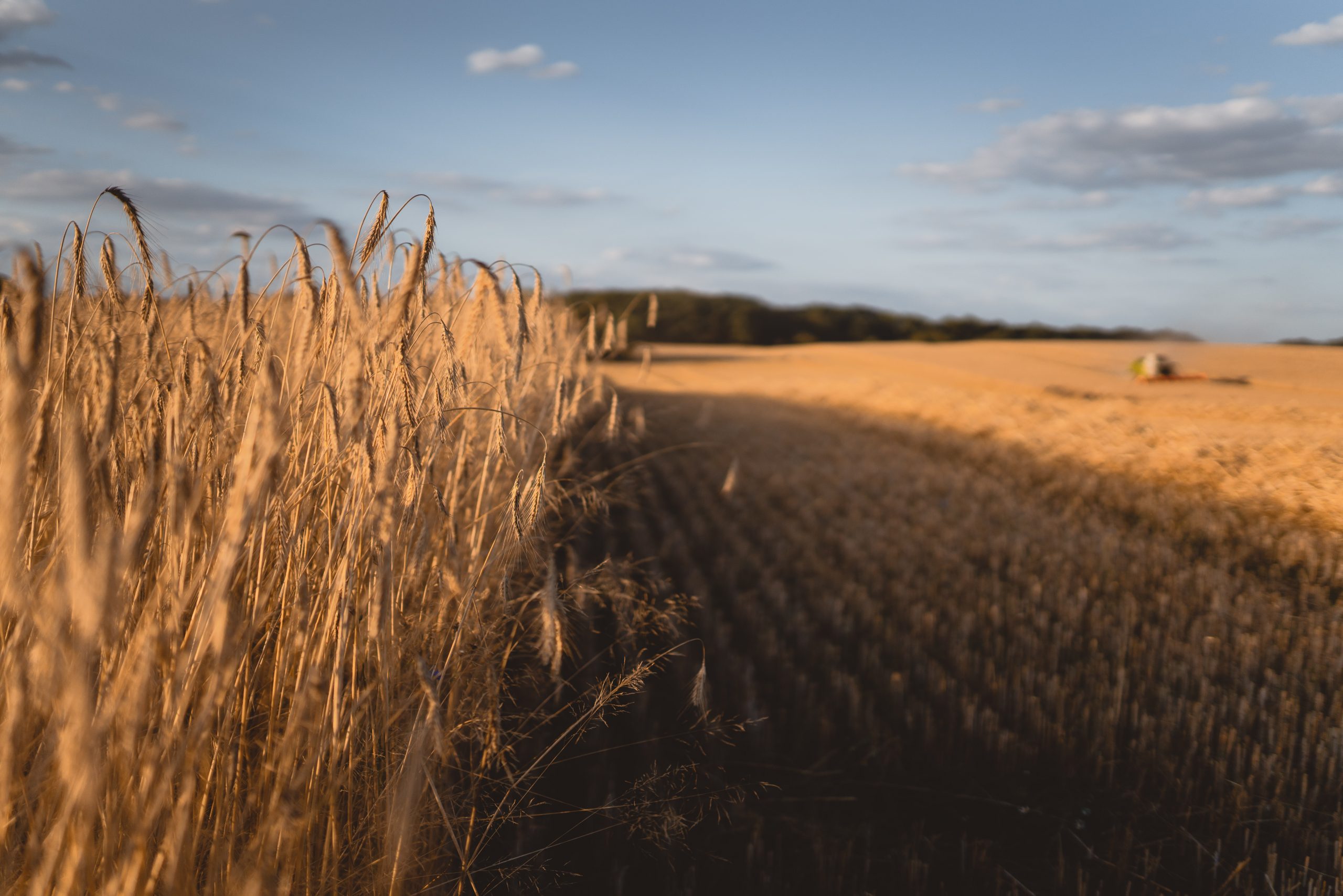How we graze
Our cows graze across our farmland, where we otherwise plant rye, spelt, wheat or even sunflowers.
With our holistic grazing system, we follow the natural behavior pattern of ruminants in large grasslands: The herd stays in the pasture all year long, close together and on the move, as they would naturally do to protect themselves from their predators. We work with mobile fences that we move and rearrange on a daily basis, so that the cows are moved from one small plot to the next small plot several times a day.
If they were to start selecting, the grasses and plants that taste less good to them would be left. Desertification would be the result. If the animals stand close together, they graze evenly, on everything, that comes in front of their hooves. Because they are on the move at the same time, they trample over a lot of leaf mass, which covers the soil and at the same time provides food for soil organisms. This mulch layer protects the soil from sunlight and allows it to retain moisture. Any area that has just been grazed by the cows is left to recover for weeks afterwards – giving the plants time to regenerate and regrow. Due to the short grazing period, the plants are not completely eaten away, which stimulates regrowth and sequesters carbon in the soil overtime.

"It's the how, not the cow!"
"Cowpats attract an incredible milieu of insects and microbes, which in turn attract many birds. A whole cascade of positive effects for biodiversity - above and below ground. "


"Cows are the key to reducing dependencies and closing our own loops."

About cowpats and nutrient cycles
Since 2019, we have been raising Black Angus and Salers cattle on a portion of our farmland with the idea of keeping our on-farm nutrient cycles as small and yet as efficient as possible. We remove nutrients from the soil via the harvest of our crops. We need to return these nutrients. Instead of buying manure on a large scale from another farm, our cattle now fertilizes the pasture themselves. Cows are the key to reducing dependencies and closing our own cycles.
This way of working allows us to avoid some tillage of the soil by heavy, agricultural machinery and thus have less soil compaction and less exposed soil and therefor less drying out.



Our grass fed beef
The appreciation for our animals does not stop in the field. Every few weeks we shoot one of our steers – and we do it directly on the pasture, without stress, but with a lot of respect and calm. We then bring it to our trusted country butcher: Lutz Lehmann, where the beef hangs, to mature, for a few weeks. It is then sliced into recognized cuts and ready for sale.
From the pasture to your kitchens: Order the best of our pasture-raised cattle to your home now. A box full of Madlitz to give you a taste of our work, a package of the highest quality beef from our Angus steers for your plates. Here you can view and order the different options and boxes:








